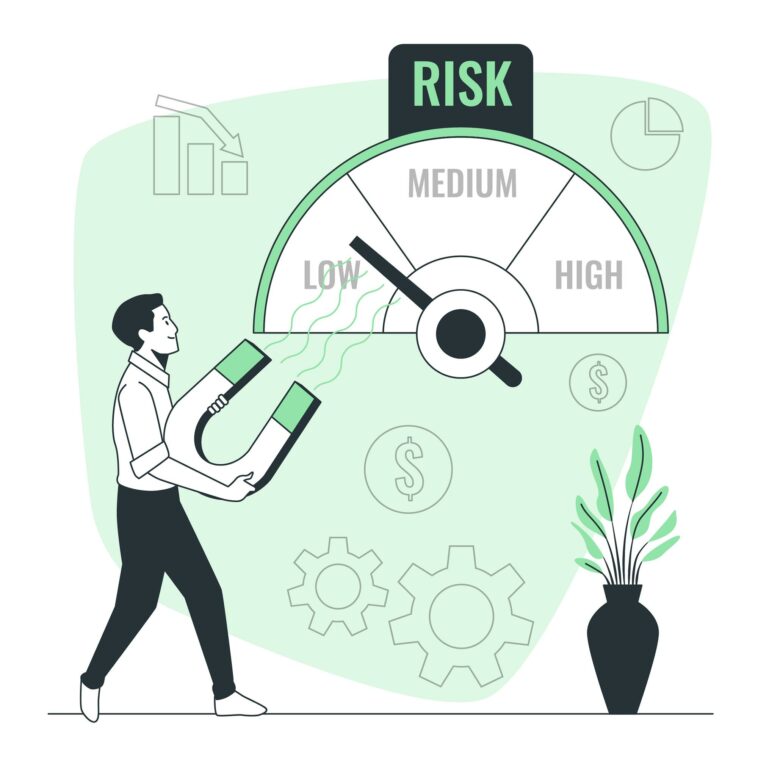In the ever-evolving business landscape, characterized by uncertainties, complexities, and a relentless pace of change, risk management emerges as a critical discipline. It’s a multifaceted field that goes beyond merely safeguarding assets to actively shaping an organization’s strategic direction, resilience, and long-term viability. This article delves into the world of risk management, exploring its nuances, methodologies, significance, and the ways it intertwines with the broader business ecosystem.
Defining Risk Management
Risk management refers to the process of identifying, assessing, and controlling threats to an organization’s capital and earnings. These threats, or risks, could stem from a wide variety of sources, including financial uncertainty, legal liabilities, strategic management errors, accidents, and natural disasters. The essence of risk management lies in maximizing opportunities and minimizing adverse impacts, thereby enhancing the overall value of an organization.
Why Risk Management is Indispensable
The indispensability of risk management is evident in its multifarious benefits:
- Proactive Decision-Making: It fosters a proactive mindset, enabling organizations to anticipate uncertainties and make informed decisions.
- Resource Optimization: Efficient allocation and utilization of resources are facilitated by identifying and prioritizing risks.
- Stakeholder Confidence: Demonstrating a commitment to robust risk management enhances confidence among stakeholders, including investors, customers, and employees.
- Regulatory Compliance: It aids in complying with industry regulations and standards, thereby mitigating legal and reputational risks.
- Sustainability and Resilience: By addressing vulnerabilities and enhancing adaptability, risk management contributes to organizational sustainability and resilience.
The Risk Management Process
A systematic risk management process is fundamental to effectively address the myriad of risks organizations face. The process typically involves the following stages:
- Identify Risks: Recognize the potential risks that could threaten the organization, considering internal and external factors.
- Analyze Risks: Evaluate the likelihood and impact of the identified risks, categorizing them based on their significance and urgency.
- Evaluate and Prioritize: Determine the risk tolerance and prioritize risks based on their potential impact and probability.
- Develop Strategies: Formulate strategies to mitigate, transfer, accept, or avoid risks, aligning with the organization’s objectives and resources.
- Implement Strategies: Execute the chosen risk management strategies and allocate resources accordingly.
- Monitor and Review: Continuously monitor the risk environment, review the effectiveness of risk management strategies, and make adjustments as needed.
Types of Risks and Mitigation Strategies
Organizations encounter various types of risks, each necessitating distinct mitigation strategies:
- Operational Risks: Arising from internal processes, people, and systems, operational risks can be mitigated through process optimization, training, and technology implementation.
- Financial Risks: Stemming from market movements, currency fluctuations, and credit issues, financial risks can be managed through hedging, diversification, and sound financial practices.
- Strategic Risks: Originating from competitive dynamics, market changes, and strategic decisions, strategic risks can be addressed through market research, scenario planning, and strategic flexibility.
- Compliance Risks: Resulting from regulatory requirements, compliance risks can be mitigated through legal consultation, compliance programs, and regular audits.
Risk Management in the Digital Age
The advent of the digital age has introduced new dimensions to risk management. Cybersecurity risks, data breaches, and technological disruptions necessitate the integration of advanced technologies and cybersecurity measures into risk management frameworks. Artificial intelligence, data analytics, and blockchain are among the technologies reshaping risk identification, analysis, and mitigation.
Challenges and Future Directions
Risk management faces several challenges, including the rapid pace of technological change, globalization, evolving regulatory landscapes, and the increasing interconnectedness of risks. Addressing these challenges calls for innovation, adaptability, and a holistic approach to risk management. The future of risk management lies in leveraging technology, fostering a risk-aware culture, and integrating risk considerations into strategic decision-making.
Conclusion
As businesses navigate through uncertainties and complexities, risk management stands as a beacon, guiding organizations towards sustainable success. Its systematic approach to identifying, analyzing, and controlling risks is pivotal in fostering resilience, enhancing stakeholder confidence, and achieving strategic objectives. In a world marked by constant change and digital advancements, embracing robust risk management practices is not just a necessity but a cornerstone for thriving in the competitive business landscape.



